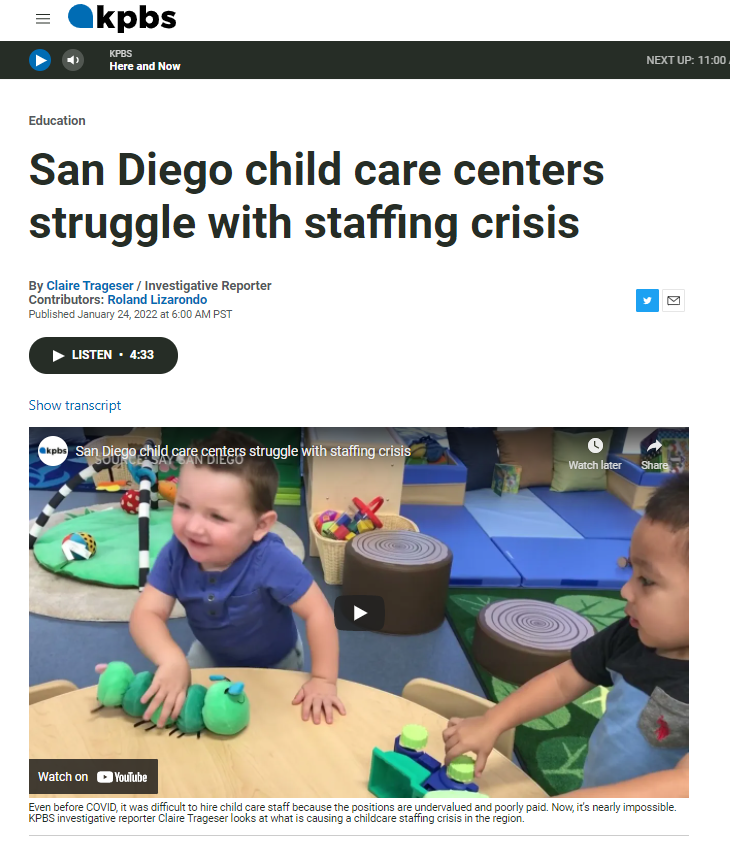The shortage of child care staff addressed in a recent PBS article about conditions in San Diego is a crisis in Los Angeles and San Bernardino Counties. CCRC was featured in this article, which outlined the many factors contributing the worker shortage.
The article San Diego child care centers struggle with staffing crisis was published Monday and included comments from child care workers and advocates, who all agreed that the pay and pandemic-related challenges have worsened the longstanding staffing deficit.
One child care provider, who earns minimum wage in the city, said she sees a revolving door of substitute care givers. “It’s really hard to implement a routine for (children) as much as I’m trying,” she said. “I’ve noticed how attached (the children) are to me. And when other subs come in, it’s kind of like stranger danger.”
These concerns were brought up at CCRC’s recent Policy Forum, where child care center directors shared people aren’t even applying for the job, let alone filling open positions. “In all my years to get no applicants from Indeed over a period of weeks is just kind of surreal,” said Provider Mary Cutone. “Usually we have to have staff to sort applicants and now we have like no applicants or under-qualified applicants, of course.”
But as the PBS article points out, raising rates for providers would mean higher rates for families who already struggle to afford care. Even when pay is higher, it doesn’t always correlate to more applicants.

Another provider, Lisa Wilkin, said her center pays well above the $11 average most providers receive but she still can’t find new employees. “When we try to advertise for positions, we’re either not getting any applicants or any qualified applicants,” she said. “We offer $25 per hour with a pretty extensive benefits package and if we can’t attract applicants, I don’t know what programs who don’t have the resources we have are able to do.”
Data from March 2021 shows about 8,500 licensed child care centers in L.A. County alone closed with few of them reopening. Meanwhile, the need for child care is still high. “Prior to the pandemic, 2.3 million children eligible for subsidized child care and development programs but only one in 10 received full day, full year care,” shared Kristin Schumacher, CA Budget and Policy Center, at the Policy Forum.
The pandemic didn’t create the problem, but rather it illuminated existing issues in the child care sector. CCRC Chief Strategy Officer Donna Sneeringer believes part of the problem is insufficient government support for child care programs. She was quoted in the article as saying, “Despite being so highly regulated, the child care industry receives limited government subsidies or other assistance. There’s no child care insurance or public support for most people who have to pay for early care and preschool.”
The Build Back Better plan would’ve injected new funding into the child care industry but the failure by Congress to pass the bill means financial support is at a standstill. While many already cash-strapped and overworked providers attempt to make ends meet, others like a provider highlighted in the PBS article have little choice but to join the mass exodus. “Considering I’m doing the job of two teachers right now at minimum wage, it’s really discouraging,” the provider said.


